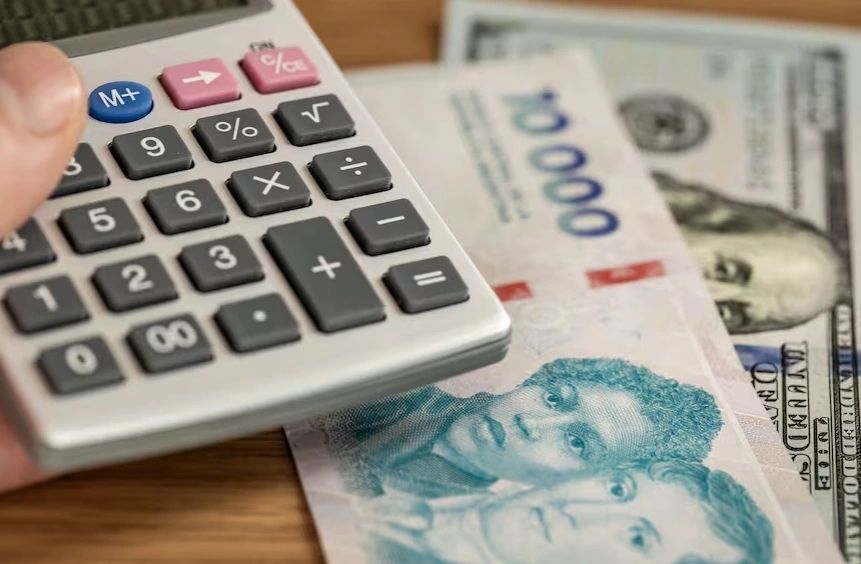BuySellBA
Administrator
Rentals after the end of the restrictions: it is advisable to make contracts in dollars or pesos - La Nacion Propiedades

Source:

 www.lanacion.com.ar
www.lanacion.com.ar
May 30, 2025
With only 6% of contracts in foreign currency and an exchange rate range of $1,000–$1,400, who wins and who loses? Contracts in dollars or pesos?
By Candela Contreras

Pesos or dollars? The difference in each rental contract depending on the payment currency agreed upon.Andrzej Rostek - Shutterstock
Only 6% of traditional rental contracts are currently agreed in dollars , but the recent lifting of the currency controls (cepo) – which ended the reign of the MEP dollar and established an official range of $1,000–$1,400 per dollar – has revived the debate over whether or not it is advisable to continue using the US currency as a reference when closing a contract.
The lifting of the currency restrictions went into effect on April 14, 2025. Thus, the almost mandatory use of the Mexican peso as a reference point for real estate transactions was abandoned , and operations were centralized in the official dollar , which now fluctuates within a range of $1,000 (lower limit) to $1,400 (upper limit), updated at a 1% monthly rate.
This scheme seeks to offer greater exchange rate predictability and allow the Central Bank to accumulate or dispose of reserves depending on where the currency trades within the band.
“ 94% of rental contracts in the City are signed in pesos and only 6% in dollars ,” 10% less than the month following the repeal of the rental law - in December 2023 - according to data provided by the Buenos Aires Real Estate Association (Cucicba), but this small segment continues to set reference prices, especially in the premium property sector.
Over the last year, the College's Statistical Observatory recorded an average of 90% of contracts in pesos, with quarterly or four-monthly adjustments based on the CPI. "And this last month, the peso portion increased," says Miguel Chej Muse, the real estate broker responsible for the observatory. "People have been seeing stability, and the market isn't expecting a big jump; the jump that could occur is due to inflation."
In parallel, a survey by Zonaprop showed that rental advertisements in dollars fell 35% compared to 2023 and that, in January 2024 (the month following the repeal of the rental law) most of the publications were in dollars , while today this has been reversed: 58% are listed in pesos and 42% in dollars.
For his part, Mateo García, Residential Director at Toribio Achával, says they have several clients who decided to close their contracts in dollars and plan to continue doing so. “They do it in dollars because they don't want to speculate on inflation. They themselves tell you: 'dollars are dollars,' ” he says. “Each client defines their profile, and the contract with the tenant is analyzed. We see a very dynamic market, and as long as the exchange rate remains stable, transactions will continue to grow,” he adds.
Today, with a market operating with a different dollar, is it worth continuing to settle contracts in pesos?
To answer this question, analyzing what happened in the last year is key. “ The owner who closed the contract in dollars last year lost, ” says Soledad Balayan, owner of Maure Inmobiliaria, adding: “Today, even though the currency controls have been lifted, people are still reluctant to do so in dollars due to previous experiences. There won't be much of an impact in the short term; we have to wait and see what happens in the long term and see how the market reacts,” she adds.
The current exchange rate situation reveals that tenants prefer contracts in dollars, but landlords prefer contracts in pesos . Balayan adds that, after the negative experiences of previous devaluations, "even though the currency controls have been lifted, people are still reluctant to pay in dollars."
With these figures, agreeing to a contract in dollars, for example, for US$500 per month, would offer the owner a rent of $653,200 at the end of 2025. If inflation actually remains above the official depreciation (30.6%), as would happen if the projections were to materialize, renting in dollars would lose its appeal . In other words, it's not in the owner's best interest to close the contract in dollars.
From the tenant's perspective, the analysis is different. If the tenant has a contract in dollars, the closer the dollar is to the cap ($1,400), the more expensive the fee will be in pesos.
On the other hand, a contract in pesos, also for $500,000, adjusted for the CPI (42.9% projected for 2025), would bring the payment to $714,500, exceeding the conversion rate of US$500 by $61,300 at the official rate. Despite this difference, tenants prefer to settle everything in pesos because they reduce their exposure to exchange rate risk and enjoy greater predictability , since quarterly or four-monthly adjustments are adjusted for inflation.

Most contracts are signed in pesos and with CPI adjustments.CrizzyStudio - Shutterstock
"We have almost 15,000 rental properties in the city of Buenos Aires for housing . Of these, 12,000 to 12,500 expire every month, and about 8,500 are renewed; most remain where they are. The rest go on the market, and if you search, you'll find 4,000 or 5,000 new options in different neighborhoods and at different prices," the specialist adds.
Balayan confirms that the contract in pesos builds trust on both sides : “Before the law was repealed, landlords demanded dollars so as not to be left behind by high inflation with an annual adjustment based on the ICL. But with CPI adjustments every three or four months, landlords are reassured, and so are tenants. Furthermore, tenants are paid in pesos, so they prefer to pay in pesos as well.”
www.buysellba.com

Source:

Alquileres tras la salida del cepo: conviene hacer los contratos en dólares o en pesos
Con apenas el 6 % de los contratos en moneda extranjera y una banda cambiaria de $1000–$1400, ¿quién gana y quién pierde? ¿contratos en dólares o en pesos?
May 30, 2025
With only 6% of contracts in foreign currency and an exchange rate range of $1,000–$1,400, who wins and who loses? Contracts in dollars or pesos?
By Candela Contreras

Pesos or dollars? The difference in each rental contract depending on the payment currency agreed upon.Andrzej Rostek - Shutterstock
Only 6% of traditional rental contracts are currently agreed in dollars , but the recent lifting of the currency controls (cepo) – which ended the reign of the MEP dollar and established an official range of $1,000–$1,400 per dollar – has revived the debate over whether or not it is advisable to continue using the US currency as a reference when closing a contract.
The lifting of the currency restrictions went into effect on April 14, 2025. Thus, the almost mandatory use of the Mexican peso as a reference point for real estate transactions was abandoned , and operations were centralized in the official dollar , which now fluctuates within a range of $1,000 (lower limit) to $1,400 (upper limit), updated at a 1% monthly rate.
This scheme seeks to offer greater exchange rate predictability and allow the Central Bank to accumulate or dispose of reserves depending on where the currency trades within the band.
“ 94% of rental contracts in the City are signed in pesos and only 6% in dollars ,” 10% less than the month following the repeal of the rental law - in December 2023 - according to data provided by the Buenos Aires Real Estate Association (Cucicba), but this small segment continues to set reference prices, especially in the premium property sector.
Over the last year, the College's Statistical Observatory recorded an average of 90% of contracts in pesos, with quarterly or four-monthly adjustments based on the CPI. "And this last month, the peso portion increased," says Miguel Chej Muse, the real estate broker responsible for the observatory. "People have been seeing stability, and the market isn't expecting a big jump; the jump that could occur is due to inflation."
In parallel, a survey by Zonaprop showed that rental advertisements in dollars fell 35% compared to 2023 and that, in January 2024 (the month following the repeal of the rental law) most of the publications were in dollars , while today this has been reversed: 58% are listed in pesos and 42% in dollars.
For his part, Mateo García, Residential Director at Toribio Achával, says they have several clients who decided to close their contracts in dollars and plan to continue doing so. “They do it in dollars because they don't want to speculate on inflation. They themselves tell you: 'dollars are dollars,' ” he says. “Each client defines their profile, and the contract with the tenant is analyzed. We see a very dynamic market, and as long as the exchange rate remains stable, transactions will continue to grow,” he adds.
Today, with a market operating with a different dollar, is it worth continuing to settle contracts in pesos?
To answer this question, analyzing what happened in the last year is key. “ The owner who closed the contract in dollars last year lost, ” says Soledad Balayan, owner of Maure Inmobiliaria, adding: “Today, even though the currency controls have been lifted, people are still reluctant to do so in dollars due to previous experiences. There won't be much of an impact in the short term; we have to wait and see what happens in the long term and see how the market reacts,” she adds.
Band floor risks: one dollar to $1,000
A contract pegged to the official dollar exposes the owner to currency fluctuations : in the current exchange rate band, this risk is lower. However, if the exchange rate falls to $1,000, the owner receives fewer pesos for each dollar agreed upon. For example, in a US$500 contract, they would receive $500,000. But if it rises to $1,400—the highest in the band— that same US$500 contract translates to $700,000, an additional profit compared to the floor.The current exchange rate situation reveals that tenants prefer contracts in dollars, but landlords prefer contracts in pesos . Balayan adds that, after the negative experiences of previous devaluations, "even though the currency controls have been lifted, people are still reluctant to pay in dollars."
Advantages and disadvantages of dollarization vs. pesoization in 2025
To analyze what could happen in the future with a contract signed in dollars, it's worth referring to the monthly data published by FocusEconomics, the report that compiles projections from leading consulting firms. The latest report estimates that the official dollar will be around $1,306.40 by the end of the year, implying a 30.6% depreciation relative to the floor of $1,000 and $1,509.80 by the end of 2026. They also forecast a slowdown in inflation to 42.9% in 2025 and 25.5% in 2026 .With these figures, agreeing to a contract in dollars, for example, for US$500 per month, would offer the owner a rent of $653,200 at the end of 2025. If inflation actually remains above the official depreciation (30.6%), as would happen if the projections were to materialize, renting in dollars would lose its appeal . In other words, it's not in the owner's best interest to close the contract in dollars.
From the tenant's perspective, the analysis is different. If the tenant has a contract in dollars, the closer the dollar is to the cap ($1,400), the more expensive the fee will be in pesos.
On the other hand, a contract in pesos, also for $500,000, adjusted for the CPI (42.9% projected for 2025), would bring the payment to $714,500, exceeding the conversion rate of US$500 by $61,300 at the official rate. Despite this difference, tenants prefer to settle everything in pesos because they reduce their exposure to exchange rate risk and enjoy greater predictability , since quarterly or four-monthly adjustments are adjusted for inflation.

Most contracts are signed in pesos and with CPI adjustments.CrizzyStudio - Shutterstock
Greater possibility of negotiation
The increased supply and current dynamics strengthen tenants at the negotiating table . “Today, the agreement between the parties works very well, and the reality is that landlords now have less leverage when negotiating, because a property that was rented by the hour in 2023 now takes three weeks to reserve,” explains Chej Muse."We have almost 15,000 rental properties in the city of Buenos Aires for housing . Of these, 12,000 to 12,500 expire every month, and about 8,500 are renewed; most remain where they are. The rest go on the market, and if you search, you'll find 4,000 or 5,000 new options in different neighborhoods and at different prices," the specialist adds.
Balayan confirms that the contract in pesos builds trust on both sides : “Before the law was repealed, landlords demanded dollars so as not to be left behind by high inflation with an annual adjustment based on the ICL. But with CPI adjustments every three or four months, landlords are reassured, and so are tenants. Furthermore, tenants are paid in pesos, so they prefer to pay in pesos as well.”
www.buysellba.com

